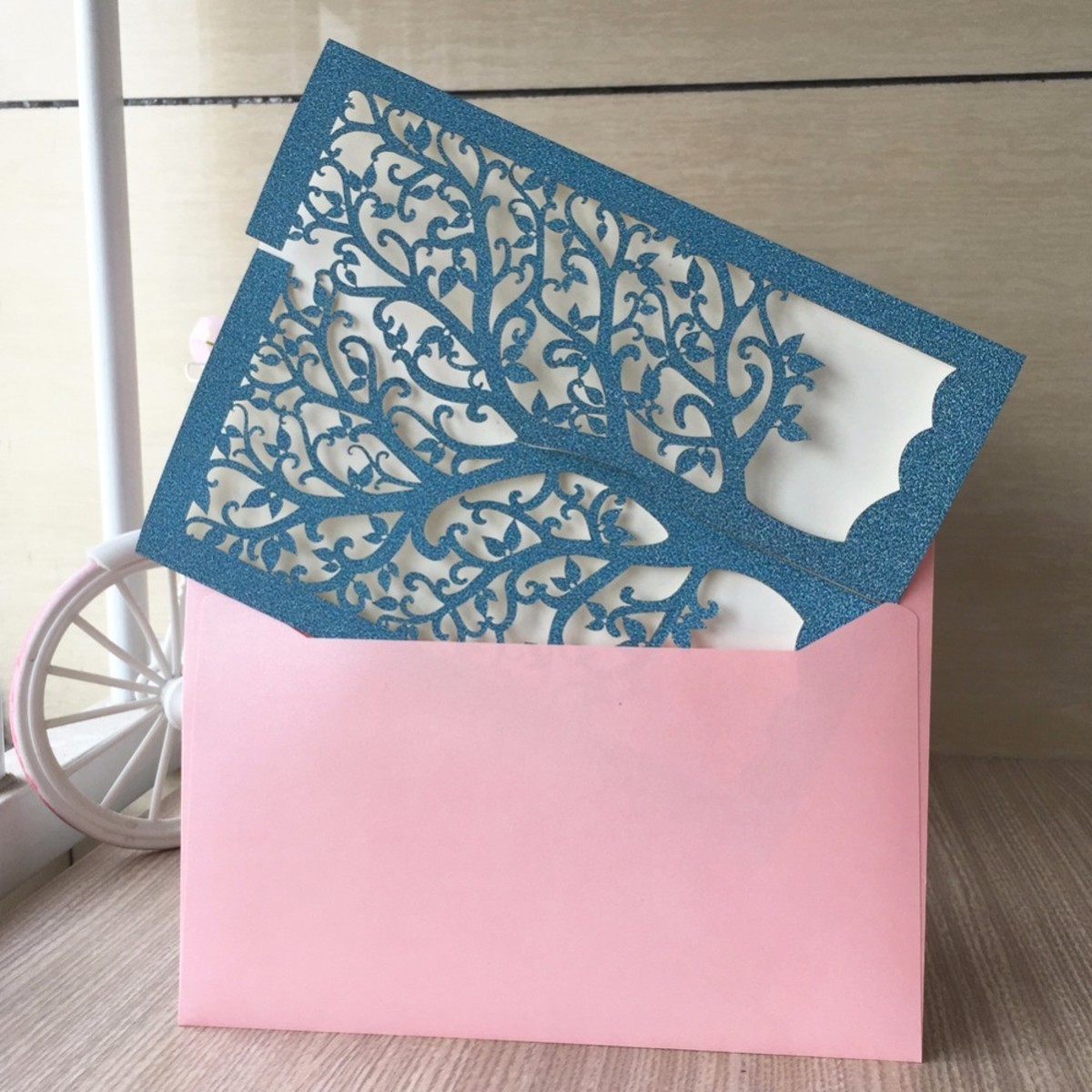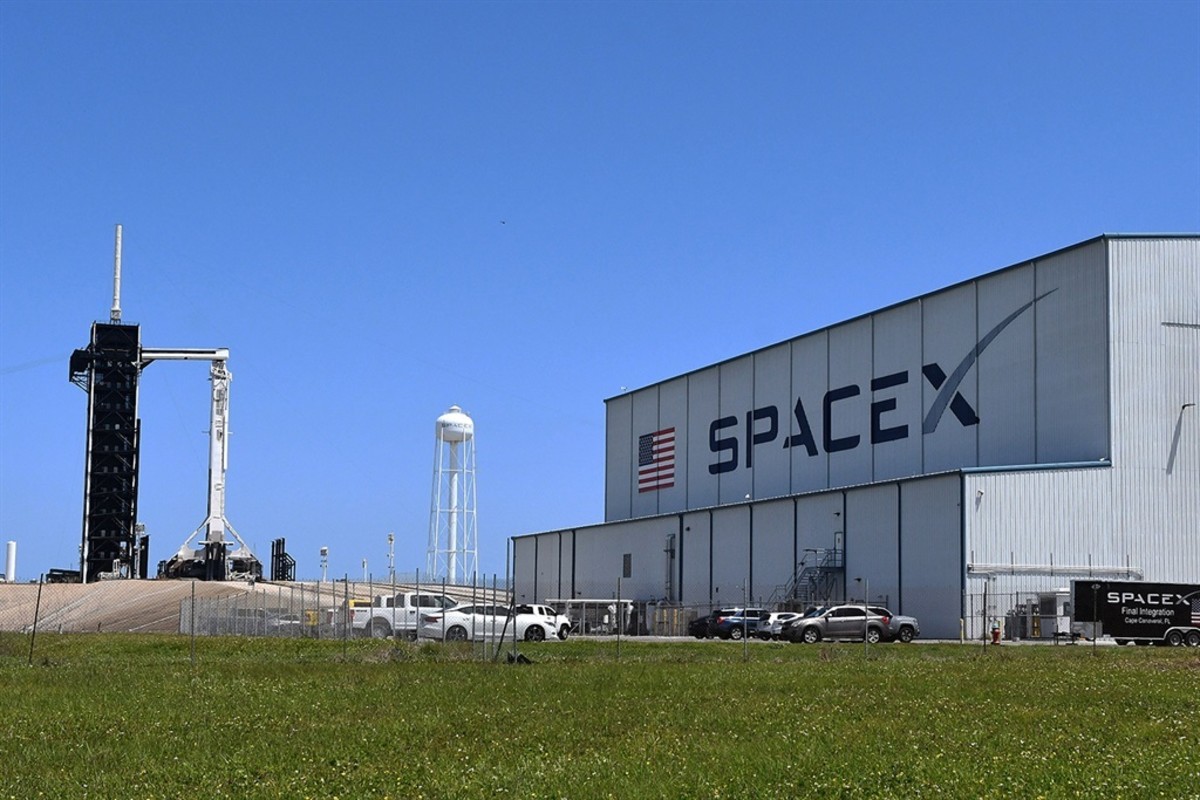Baby Post - Maternity Mail Memories and Meanings
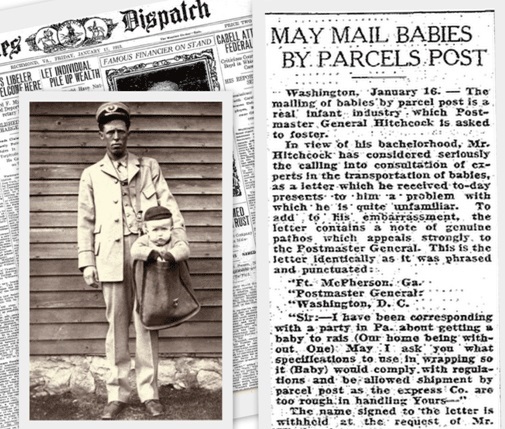
Baby Mailing was an Infant Industry
People send all kinds of crazy stuff through the US Mail. As a mailman, there are several times I've gone to pick up Express Mail in the morning and come back with a truckload of live chickens. The chickens cluck and scratch nervously in the back of the vehicle as I transport them back to the post office for delivery. To calm the birds down I try singing to my fowl cargo, but this only makes them more nervous. Mel's music does not soothe the savage breast, I've discovered.
I've also delivered bumpers and truck wheels to which a very thin layer of bubble wrap has been applied to make them qualify as "mail." I've hauled crickets and bees. At least twice I've even delivered human remains, of course in the form of ashes. These come in via registered mail that requires a signature and I wonder what happens if nobody is home to sign and the package sits unclaimed for days on the post office shelf. Does the spirit of the deceased begin to haunt the post office as he or she waits impatiently to be picked up by loved ones who are taking their sweet time about taking their dearly departed home? Some letter carriers are really superstitious about delivering the cremated remains of human beings and will refuse to do so. My view is that any spirits clinging to the ashes are welcome to ride along as long as they don't distract me while I'm driving, so what the heck? No annoying "Are we there yet?" questions from dead passengers, please. So far the dead passengers have behaved themselves.
There was a time in this country, however, when it was more than dead humans that were transported by the US mail. After the beginning of the Parcel Post service in 1913, a few people read a really broad interpretation into the new shipping rules and took advantage of it by mailing live humans. Postage and even insurance were attached to baby bundles and up the road to grandma's house many an infant was shipped.
Many of these tales of baby post are of the urban legend variety and there is some debate about how many children were really hauled around in a satchel by letter carriers. There is no doubt, however, that in the baby-post era between 1913 to 1915 people trusted the postal service enough to put their children into the care of postal employees for their journeys, some as short as mile up the road, some crossing multiple state lines. The United States Postal Service was one of the country's most trusted public institutions during the height of the "baby post" craze and remains so, despite Congressional efforts to destroy the organization that was good enough to deliver children and is plenty of good enough to deliver America's non-human mail.
If it fits it ships!
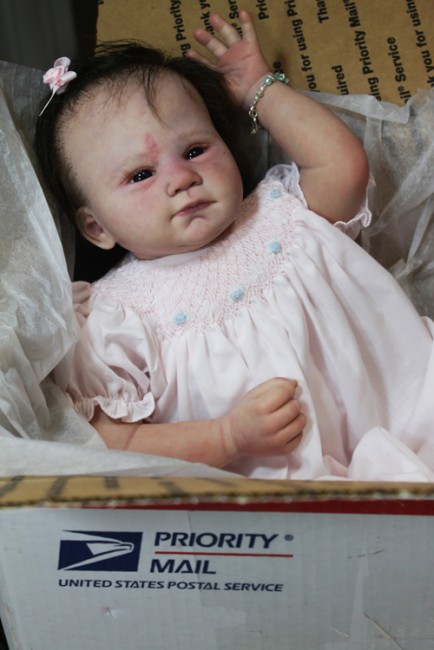
A Brief History of Baby-Post
The Smithsonian Institution has documented several legitimate examples of the baby mailing craze that that took place in the United States after the birth of Parcel Post in January, 1913. The first infant to be delivered by the US Mail was a boy in Batavia, Ohio, who for 15 cents was carried via Rural Free Delivery to his grandparent's house a mile down the road. The tyke was insured for $50. Later that same month a little girl in Sharpsville, Pennsylvania was hauled to a relative's house for the princely, or rather princessly sum of 45 cents. Quite naturally, the ladies commanded a higher shipping rate.
Then in May, 1914, six year old May Pierstorff of Grangeville, Idaho caught the attention of America and the Postmaster General when she was shipped 73 miles for 53 cents. This incident prompted Postmaster General Burleson to issue directions to the nation's postmasters that barred humans from the mail.
In spite of the Postmaster's restrictions, the benefits of baby-post were way too enticing for financially strapped parents who couldn't afford the cost of conventional travel, and many postal officials were willing to look the other way. In 1915 Edna Neff was mailed on a freight car from Pensacola, Florida to Christainburg, Virginia for 15 cents. Edna weighed in under the 50 pound Parcel Post limit, so no additional freight charges were applied to her trip and her parents saved a few stamps. This is the longest known delivery made via baby-post.
In September of 1915 baby-post made its final ride when Maud Smith of Jackson, Kentucky was shipped home from her grandmother's house. A local newspaper caught wind of the trip and an investigation was launched that spelled the end for babies my mail.
It should be noted that none of these children were dumped callously into mailbags for shipping. No kids were run through a cancellation machine or dropped onto a conveyor belt to be sorted alongside Uncle John's golf clubs or Grandma's care package cookies. Not a single infant was bubble-wrapped or packed with Styrofoam peanuts into a cardboard container. Today's well known "it if fits it ships" flat rate box was not in existence at the time to ship babies in, or who knows? In reality, all of these children were placed into the care of known and trusted postal employees who accompanied them on a freight car or actually walked them to their destinations if they were only going a short distance down the highway.

Can Baby-Post Make a Comeback?
Although the history of babies by mail was blessedly brief, today's Postal Service might want to reexamine this business practice. To solve its current revenue crisis, a return to baby-post could be a way for the Postal Service to generate much needed cash to balance the bottom line, but even in the planning stages the idea generates several problematic logistical scenarios. For instance:
- If insufficient postage is affixed to a baby with no return address and the recipient refuses to pay the postage due, does the infant go to the mail recovery unit or directly to the social services office?
- What happens if no one answers at the addressee's home and the carrier has to return the baby to the post office? Does a clerk have to remain in the post office around the clock to feed the baby and change his or her diapers?
- While in transit, will the letter carrier charged with delivering the baby be given extra time for baby-related duties such as bottle feeding, diaper changing, and lullaby singing, or will the supervisor curtly inform the carrier to "deliver the mail, take care of the kid, and make sure you're back in 8 hours." I can envision many grievances being filed with the Union over this one.
- If baby has a "biological incident" while in transit, do postal regulations require that a hazmat team be dispatched to deal with the clean up?
- What about insurance? Will the baby's mailing insurance rate be determined strictly on a per-ounce basis, or will more subjective criteria be applied? For instance, will cute babies be insured for a hefty fee while the less photogenic, "face only a Mother could love" tykes are insured for mere pennies? This could cause some controversy.
These are issues the stork never had to worry about, as far as I know. I think it's better to leave baby delivery in the hands of the professionals.
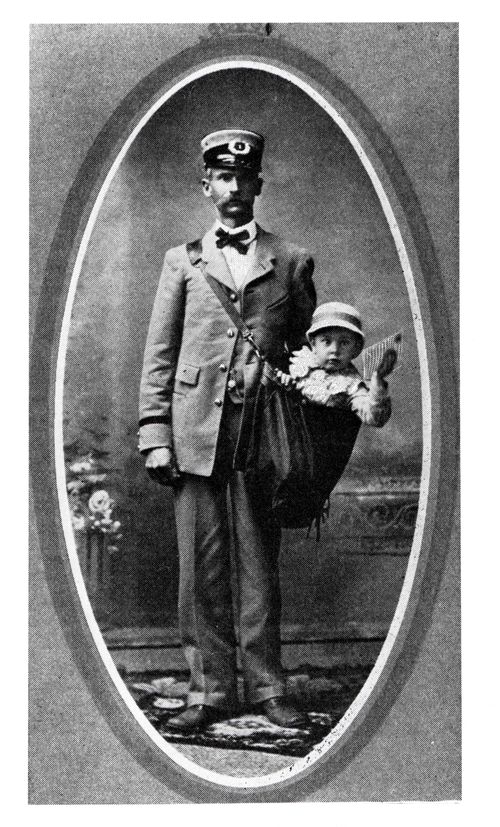
What Baby-Post meant then, and what it means now
I am treating the subject of baby-post a little more tongue in cheek than you might think appropriate, but there are some serious implications that arise from an examination of the fleeting phenomena that need to be looked at in light of what they meant in 1913 and what they mean now.
Since the dawn of US history the Postal Service has been one of this country's most trusted institutions. American citizens have always enjoyed the tremendous benefit of affordable mail delivery and the reliable, consistent service of a letter carrier that has been on the same route for years and knows the people in his or her neighborhoods intimately.
Letter carriers are part of America's extended family. I was just reading a Facebook post this morning by a letter carrier friend in Indiana who endured the brutal "snowpocalypse" this past winter. What helped her get through it, both physically and psychologically, was the love and care of her customers, who when the weather was at its worst invited her inside to get out of the cold and gave her hot drinks to warm her frozen blood.
Postal customers pour out their love on their letter carriers like this because they know they will be loved back. Letter carriers are constantly being given accolades for saving a senior citizen that has broken a hip and fallen on the kitchen floor, or for smelling something burning on a stove and alerting the snoozing customer who left it just in time to save the house from bursting into flame, or for saving a child from a marauding pit bull on the loose. Letter carriers do the little extras for their customers that family members would be expected to do, so is it surprising that postal customers view their letter carriers as family, and would feel completely confident about leaving their children in the mailman's care?
More than anything else, the phenomena of Baby-Post exemplifies America's love affair with the postal service. Getting rid of the "service" in the name and breaking up the USPS into indifferent business entities that care more about pennies saved than people served would be a serious mistake. Your post office belongs to you; don't hand it over to the agents of pure corporate greed.
Okay, so maybe we're not shipping babies by mail train anymore, but don't let corrupt politicians derail America's constitutionally mandated Postal Service. Baby-post is no longer a physical reality, but its spirit lives on.





